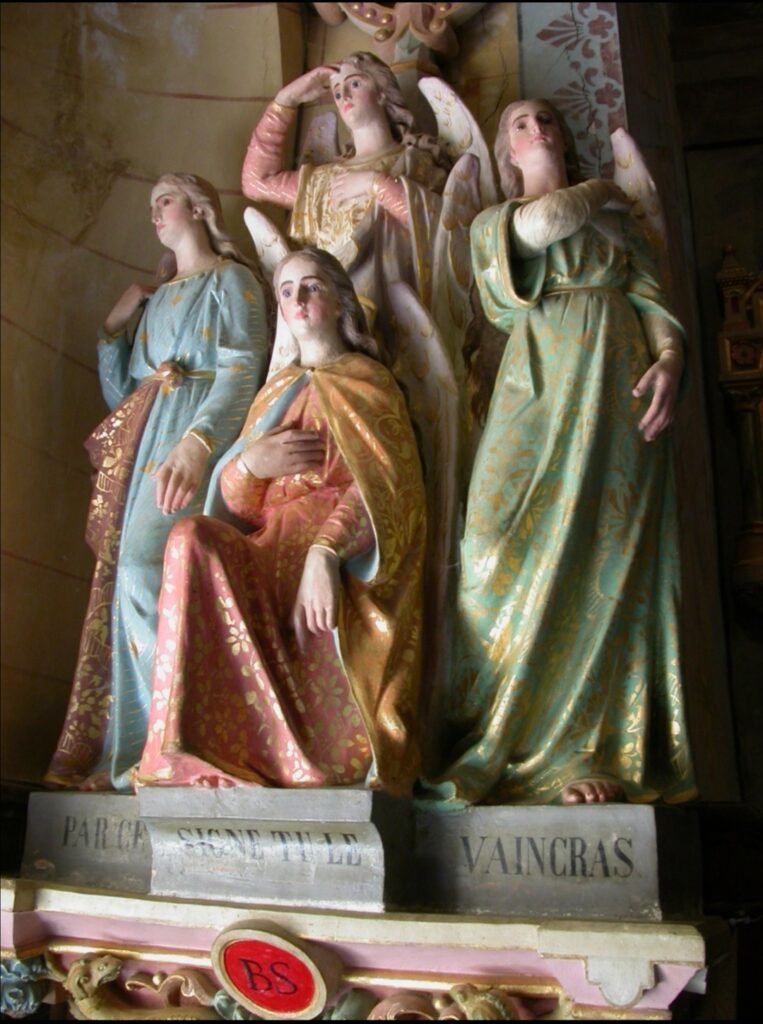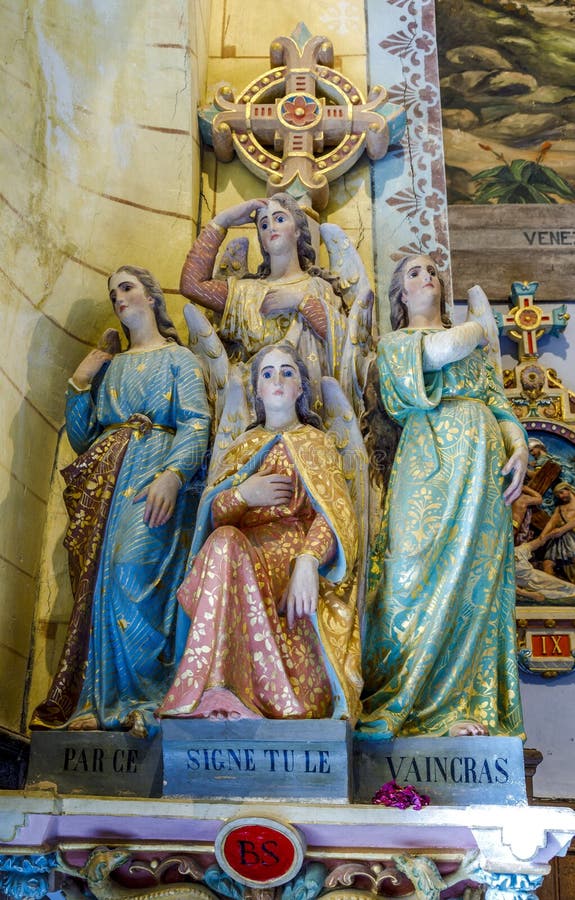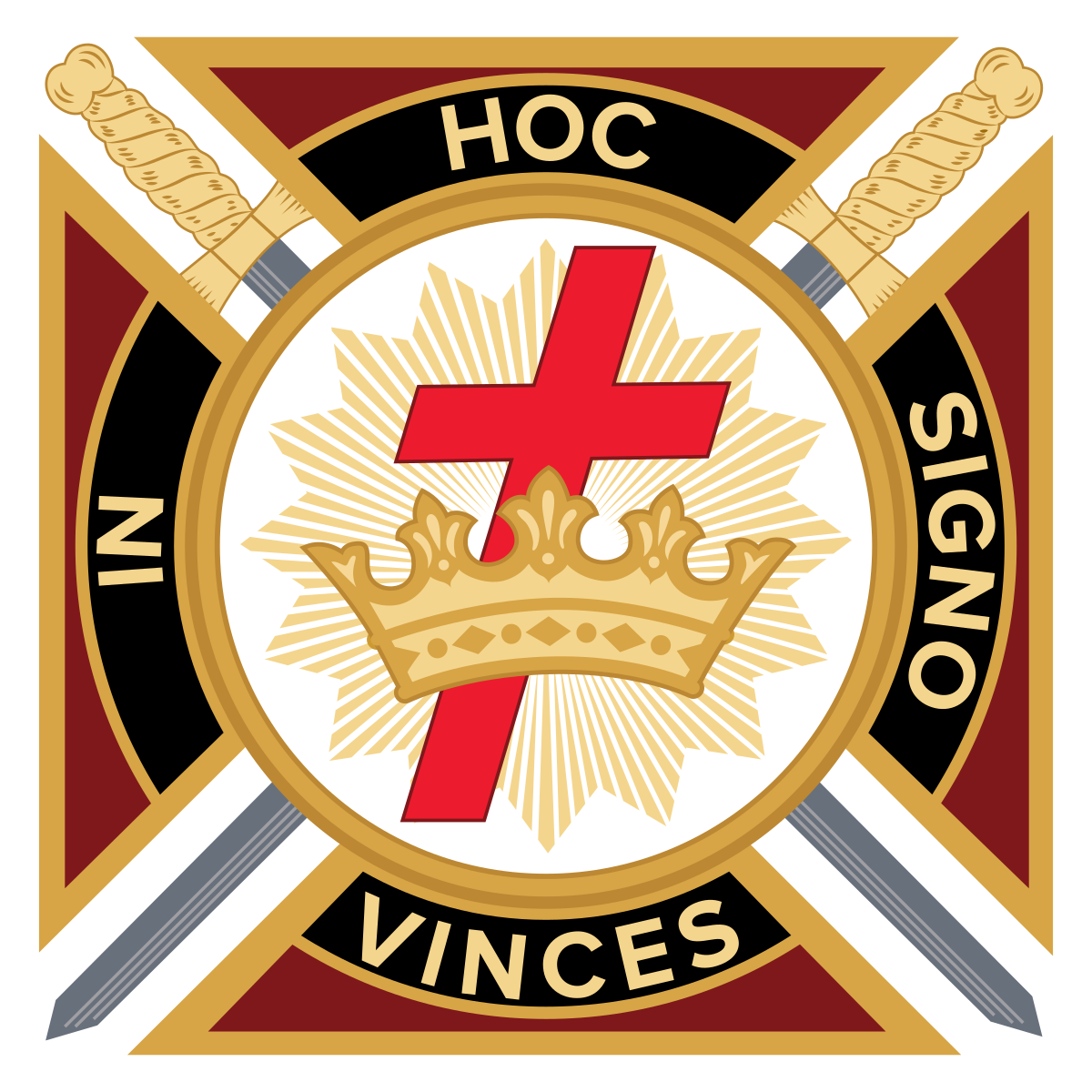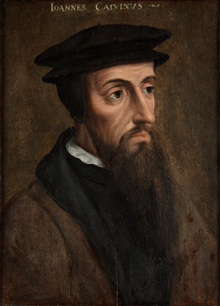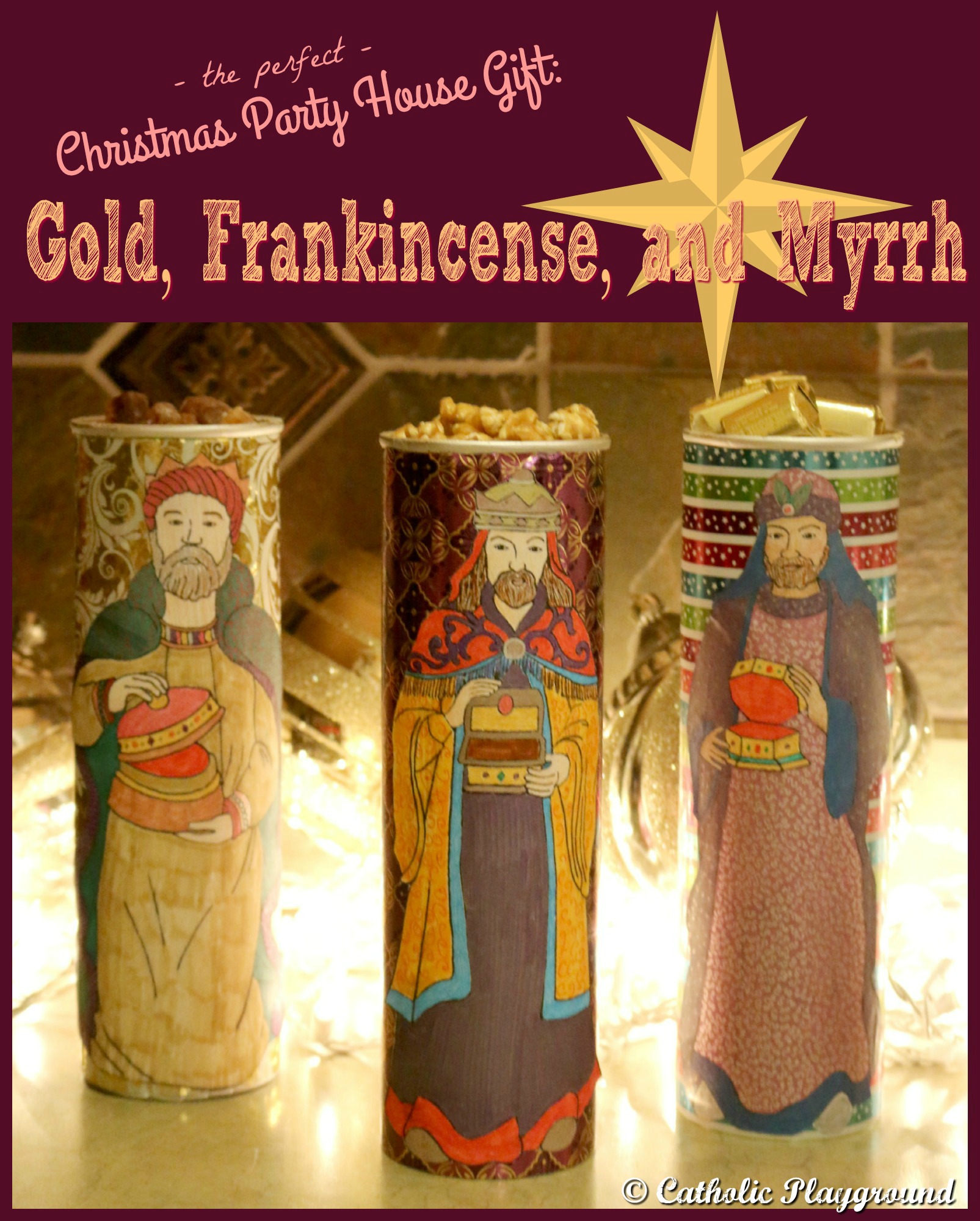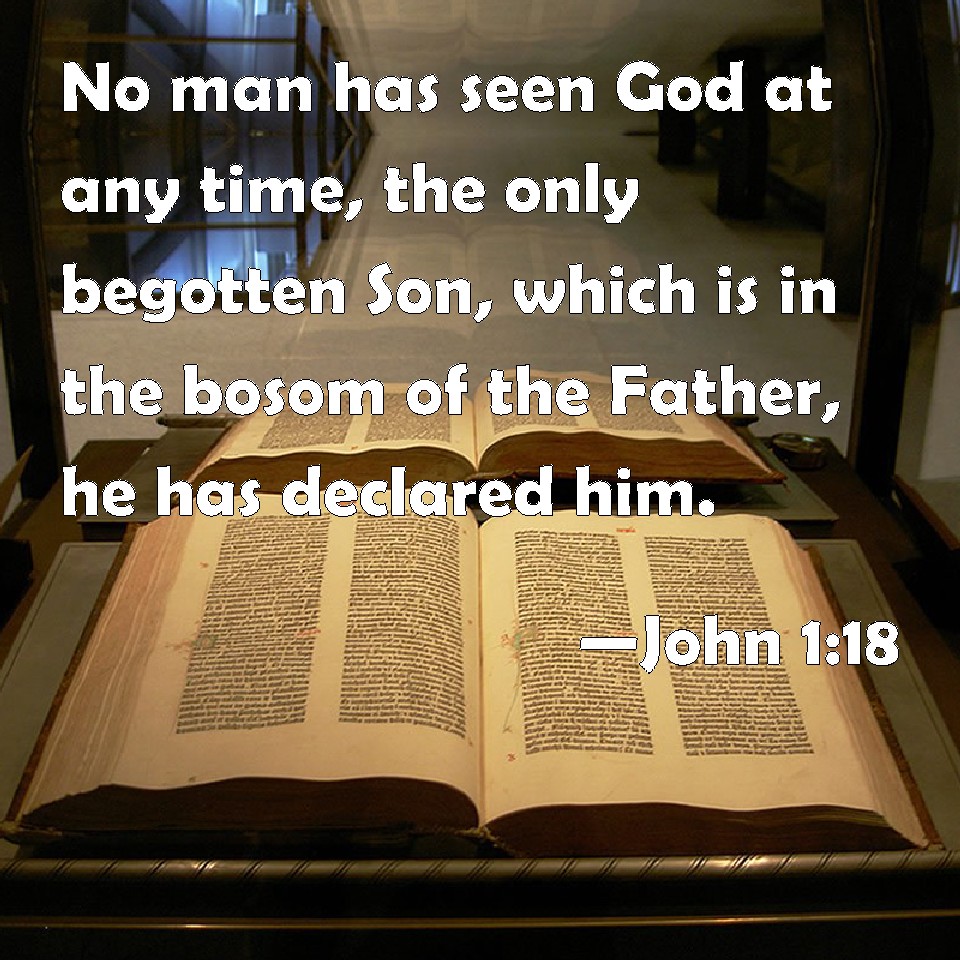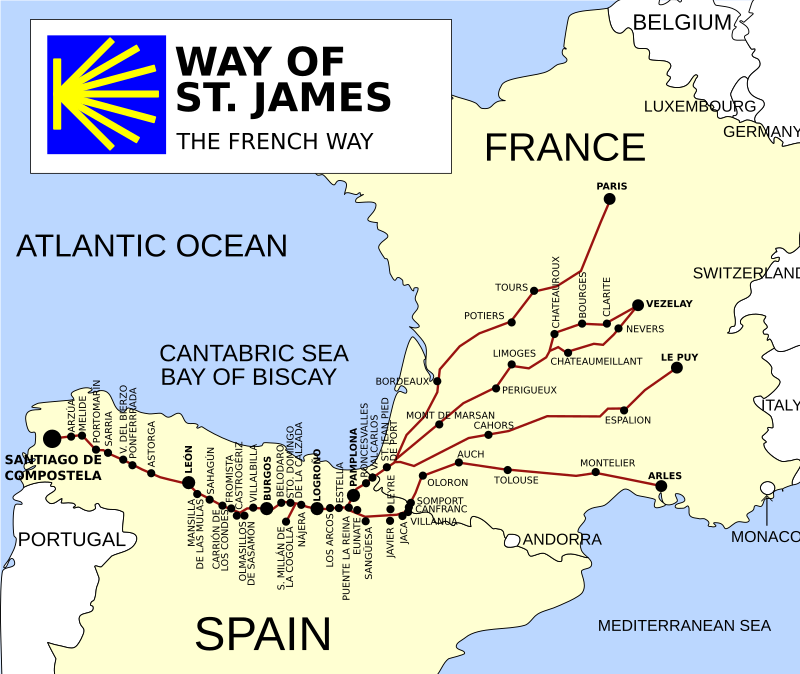|
|
General: RENNES LE CHATEAU=OCTOBER 28TH=STATUE OF LIBERTY=EGLISE STE MARIE MADELEINE
Elegir otro panel de mensajes |
 Primer
Primer
 Anterior
2 a 16 de 16
Siguiente
Anterior
2 a 16 de 16
Siguiente
 Último
Último

|
|
|
HOLY EQUAL-TO-THE-APOSTLES MARY MAGDALENE
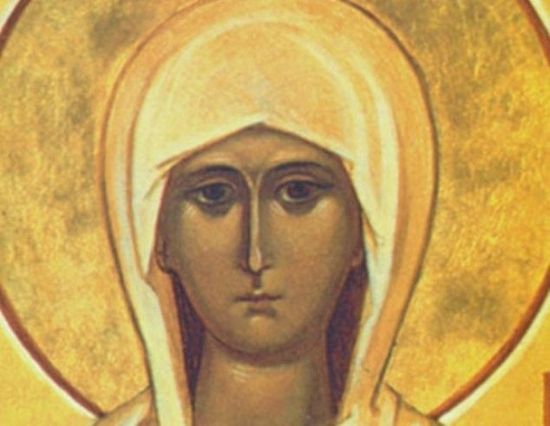
Through His sufferings Christ the Savior redeemed mankind, and opened the gate to the Kingdom of Heaven. During His service he continually preached to all that they follow Him. Those who heard God’s words received them in differing ways, but there were those among them who brought forth fruit in abundance (cf. Mt. 13:8). One of these was the holy equal-to-the-apostles Mary Magdalene. She received that name from the place where she lived, in the town of Magdala. This town belonged to the tribe of Issachar and was located on the western shore of the Sea of Tiberius in Galilee, not far from Capernaum. The naming of a woman for her place of residence shows that she was well-off, because other women’s names were taken, for example, from their family relations: Mary the mother of Jacob, Maria the mother of Cleopas. Luke the Evangelist says that Christ preached the Kingdom of Heaven, and then after Him followed certain women, which had been healed of evil spirits and infirmities, Mary called Magdalene, out of whom went seven devils… and many others, which ministered unto him of their substance (Lk. 8:1–3).
We find the most about Mary Magdalene in the Gospel in passages where the sufferings of Christ the Savior are described, when she showed her dedication and faithfulness to her divine Teacher: Now there stood by the cross of Jesus his mother, and his mother’s sister, Mary the wife of Cleophas, and Mary Magdalene (Jn. 19:25). After the death of the divine Sufferer on the Cross, the centurion on watch believed in the divinity of Christ the Savior. The Evangelist Matthew adds, And many women were there beholding afar off, which followed Jesus from Galilee, ministering unto him: Among which was Mary Magdalene, and Mary the mother of James and Joses, and the mother of Zebedees children (Mt. 27:55–56). Then righteous Joseph of Arimathea asked for the body of the divine Sufferer and buried Him in his own new tomb (Mt. 27–60). As the Evangelist Matthew notes, And there was Mary Magdalene, and the other Mary, sitting over against the sepulcher (Mt. 27:61). The Evangelist Mark says, Mary Magdalene and Mary the mother of Joses beheld where he was laid (Mk. 15:47). Then, when the sabbath was past, Mary Magdalene, and Mary the mother of James, and Salome, had bought sweet spices, that they might come and anoint him (Mk. 16:1). Their worries about the sealed tomb were put to rest all by themselves, when they looked, they saw that the stone was rolled away (Mk. 16:4) and they saw in the tomb a bright angel, who told them the news about the Risen Lord Christ. Then after His resurrection, He appeared first to Mary Magdalene, out of whom he had cast seven devils. And she went and told them that had been with him, as they mourned and wept (Mk. 16:9–10). The Evangelist John the Theologian speaks a little differently and in more detail about the events of those sorrowful days, which would soon become joyful. Mary Magdalene came early, when it was yet dark, unto the sepulchre, and seeth the stone taken away from the sepulcher (Jn. 20:1). She hastened to tell the apostles Peter and John about it, and they in turn hastened to the tomb where they saw the linen clothes lying (Jn. 20:5). Then they returned, but Mary stood without at the sepulchre weeping: and as she wept, she stooped down, and looked into the sepulchre, And seeth two angels in white sitting, the one at the head, and the other at the feet, where the body of Jesus had lain. And they say unto her, Woman, why weepest thou? She saith unto them, Because they have taken away my Lord, and I know not where they have laid him. And when she had thus said, she turned herself back, and saw Jesus standing, and knew not that it was Jesus. Jesus saith unto her, Woman, why weepest thou? whom seekest thou? She, supposing him to be the gardener, saith unto him, Sir, if thou have borne him hence, tell me where thou hast laid him, and I will take him away. Jesus saith unto her, Mary. She turned herself, and saith unto him, Rabboni; which is to say, Master. Jesus saith unto her, Touch me not; for I am not yet ascended to my Father: but go to my brethren, and say unto them, I ascend unto my Father, and your Father; and to my God, and your God. Mary Magdalene came and told the disciples that she had seen the Lord, and that he had spoken these things unto her (Jn. 20:11–18). In the service of the Sunday of the Holy Myrrhbearing Women [the second Sunday after Pascha] we read: “Having come to the tomb seeking the Lord, Mary Magdalene and the other Mary, saw the angel like lightning sitting on the stone, who said to them, ‘Why seek ye the Living among the dead? He has risen as he said. You will find Him in Galilee.”[1]
After the Ascension of the Lord, Mary Magdalene undoubtedly was among certain women (Acts 1:14), who abided in one spirit in prayer with the holy apostles and the Mother of God in the upper room, awaiting the descent of the Holy Spirit. A later traveller describes this place in the holy city of Jerusalem. In the church of Sts. Constantine and Helen, “we were brought … where Christ sat on the stone when He appeared to Maria Magdalene… And the stone, which was the chair, was round, of red rock.”[2] In the church of the Resurrection of Christ “is the stone upon which Christ sat and appeared to Maria Magdalene.”[3]
Church tradition has preserved testimony to her exploits in the capital of the empire. “In Rome, having appeared to the Emperor Tiberius, St. Mary Magdalene brought him a red egg with the words, ‘Christ is Risen!’ Then she told the emperor about the Savior’s sufferings on the Cross. In those days, the presentation of an egg was a sign of joy. From the time of St. Mary Magdalene the trading of eggs on the day of the Resurrection of the Lord amongst Christians became a custom.”[4] This is mentioned in the akathist to the holy Myrrhbearer. In the eleventh ikos we read: “Having reached ancient Rome, courageously didst thou appear before Tiberius Caesar, and with the image of a red egg and wise words thou didst expound to him the life-bearing power of Christ, rebuked deceitful Pilate and the godless high priest, that they will be justly repaid for their lawless deeds… Rejoice, thou who didst not fear Caesar’s wrath; rejoice, thou who didst show him the evil and cunning of Christ’s enemies.”[5] The Church historian Eusebius Pamphilus says that the Roman Emperor Tiberius (14–37) knew from Pilate of the events in Palestine, of the talk about the resurrection of Christ the Savior, “and did not find anything preposterous in Christ’s teachings.”[6] Moreover it is supposed that thanks to Mary Magdalene’s preaching the Roman ruler proposed to the senate that they “include Christ in the pantheon of Roman gods.”[7] The holy Myrrhbearer knew the apostle Paul, whom the Lord had called to preach the Gospel only after His glorious Resurrection, and apparently helped him in his missionary service. Therefore the apostle Paul at the end of his epistle to the Romans writes, Greet Mary, who bestowed much labour on us (Rom. 16:6).
Later Mary Magdalene came to Ephesus, where St. John the Theologian who, as opposed to the other Evangelists, wrote the fourth Gospel significantly later; in it is spoken in detail about the resurrection of Christ the Savior and His appearance to Mary Magdalene. Mary Magdalene reposed in the Lord in Ephesus. St. Dimitry of Rostov (†1709; commemorated October 28), says that she “was laid to rest at the entrance to the cave in which the seven youths of Ephesus would later fall asleep.”[8] In examining the Western version of St. Mary Magdalene’s relics in Provence, Archbishop Sergius (Spassky) notes that “according to the Life of St. Willibald (comm. July 7), bishop of Eichstadt, who travelled to the East in the eighth century, her grave was shown in 745 in Ephesus.”[9] Later her holy relics were translated to Constantinople during the reign of Emperor Leo VI the Philosopher (886–912).[10] Meanwhile Igumen Daniel, who travelled from Kievan Rus’ to the Holy Land at the beginning of the eleventh century, during the heat of the crusades, visited also Ephesus. He wrote, “And here, near that cave where the seven sleeping youths of Ephesus lie, are … also the grave of Magdalene Mary and her head.”[11] And an anonymous Russian traveller who visited Constantinople in the late thirteenth century–early fourth century, that is, after the fall of the Latin empire, describes the holy site in the capital city monastery of Righteous Lazarus: “St. Lazarus the friend of God is sealed in the right column, and his sister Martha lies at his left hand; here … in the left column Mary Magdalene is enclosed.”[12] Later travellers who visited this monastery say nothing about the relics of St. Mary Magdalene.[13]
<…>
The fate of the holy Myrrhbearer’s relics is interesting. Apparently, “during the crusades they were taken to Rome and placed under the altar of the Lateran Cathedral. A part of the relics of St. Mary Magdalene are in France, near Marseille. Particles of her holy relics are preserved in the monasteries of Mt. Athos and Jerusalem.”[14] Many relics of ancient saints, as a consequence of the shameful Fourth Crusade—when in 1204 Constantinople was seized and plundered—ended up in the West. Behind this is the peculiar piety of the Western crusaders. It is worth noting that before and after there were also cases when due to various circumstances the relics of various saints ended up in the West; for example, those of St. Nicholas. An unknown traveller from Suzdal, who went with Metropolitan Isidore in 1438 from Moscow to Italy to the Uniate Council, says of the holy shrines of Venice: “There St. Marko himself lies; and there are many relics of saints, taken from Tsargrad [Constantinople].”[15] Now, centuries later, we can see a special providence in this, because the saints’ relics would have perished from the Turks at the fall of Byzantium.:[16] But during following years the Western Church itself experienced a schism—Protestantism arose, which rejects the veneration of holy relics and icons. Incidentally, the veneration of specific saints in different regions has been preserved and bears a particularly solemn character; for example, in the southern Italian city of Bari they solemnly honor St. Nicholas on May 9: Wearing costumes from the ninth century they carry an ancient sculpture of him through the town, and so forth. In “The Travels of Avraamy of Suzdal to the eighth council with Metropolitan Isidore”, a mystery play is described that was enacted in the Ascension Church of Florence on the very feast of the Ascension. The Mother of God and St. Mary Magdalene were the only female persons named in the play.
Bishop Sergius (Spassky) notes the opinion in Western patristic historiography that equates Mary Magdalene with the sinful woman who washed the feet of Jesus Christ in the house of Simon the Pharisee (Lk. 7:38), as well as the identification of Mary Magdalene with Mary the sister of righteous Lazarus. The Eastern fathers differentiate between them.[17] This is quite an important differentiation in the veneration of the holy Myrrhbearers, because behind it is a different understanding of her life’s path and podvig. Western tradition considers that equal-to-the-apostles Mary Magdalene, after her preaching in Rome, labored in the south of France and Provence, and along with her righteous Martha, Lazarus, and St. Maximinus preached the Gospel. Therefore St. Mary Magdalene is honored as the enlightener of Marseille, who converted its inhabitants to Christianity. The cave, which is preserved in the area of La Sainte Baume, where the holy Myrrhbearer spent time in solitude, later became a place of pious pilgrimage and worship.[18]
In the church of the holy equal-to-the-apostles Mary Magdalene in Saint Maximinus, in the center of the northern part of the basilica there is an entrance to the crypt where the relics of Christ’s disciple were uncovered in 1279.[19] It was discovered that from out of the righteous woman’s mouth a plant was sprouting. Theological thought explained this as a testimony to her special mission: She was an “Apostle to the Apostles”, because it was she who announced the glad tidings of the Resurrection of Christ the Savior to the Apostles.[20] The initiator of the uncovering of the holy relics of Christ’s disciple was Prince Charles of Anjou († 1309), the heir to the duke of Provence. From that time on, Mary Magdalene became the protectress of the Anjou dynasty and of Provence, and her veneration took on a particular, imperial character.[21] A basilica was built over her relics. Here the holy Myrrhbearer is especially honored, and on July 22 according to the Gregorian calendar there are solemnities in the city.
It is important to note the opinion of one Western researcher who “came to the conclusion that the cult of Mary Magdalene arose in Provence no earlier than the mid-eleventh century,”[22] and services to her began in the West “only in the eleventh or twelfth centuries.”[23] They began to write Lives of the holy equal-to-the-apostles Mary Magdalene afterwards: the heremetic edition, the apostolic edition, and then both editions were combined into one. Later her Life was entered into Western hagiographic and homiletic compilations. The co-ascetics and continuers of the labors of St. John Cassian the Roman (†435; comm. February 29) aided in the spread of St. Mary Magdalene’s veneration in Europe.[24]
Because in the West the myrrhbearer was equated with the sinful woman who washed the feet of the Savior with her tears (Lk. 7:38), and the seven devils that tormented her were considered to be “retribution for her sins”,[25] the sermons of the Western clergy glorified St. Mary Magdalene as an example of true repentance.[26] The Eastern tradition, however, considers that these were two different women and that the works of God (Jn. 9:3) were made manifest on her. “Mary Magdalene was possessed by demons not due to her sins or the sins of her parents, but rather it was allowed by God’s Providence in order that the Lord Jesus Christ might show the works of God’s glory, and manifest the great miracle of the healing of Mary Magdalene, the enlightenment of her mind, drawing her to faith in Christ the Savior and to eternal salvation.”[27] Her veneration in the West was multi-faceted. Mary Magdalene’s care for Christ inspired the faithful to good deeds in her name.” Therefore in the Middle Ages guesthouses for travellers appeared that were “under the patronage of St. Mary Magdalene,[28] as well as hospitals and leper colonies. Monasteries were founded in her name, and in fact “monasteries named for St. Mary Magdalene were only outnumbered by those named after the Virgin Mary, which testifies to the great veneration for this saint.”[29] She is also the patron saint of craftsmen of various specializations.[30]
<...>
During life of her Divine Teacher she stood out for her faithfulness and dedication to Him. The later translation of her relics enabled the spread of her veneration in the world. Now, prayers are raised up to her in various countries and Churches. Her name and labors witness to the resurrection Christ the Savior. <...> One preacher said of her: “What a magnificent image of grateful love for the Lord is the holy equal-to-the-apostles Mary Magdalene! And thou, O Christian soul, should like her be penetrated with the same strong and unchanging feeling for the Lord Jesus. By His redeeming service you also are freed in the Sacrament of Baptism, like Magdalene, from the power of the evil, cunning spirits that have nested in you and have had access to people since the time of our forefather’s sin.”[31]
https://orthochristian.com/122857.html |
|
|
|
|
|
FRANKINCENSE/FATIMA/POPE FRANCIS/FRANCE/DA VINCI CODE/FREEMASONRY

And going into the house, they saw the child with Mary his mother, and they fell down and worshiped him. Then, opening their treasures, they offered him gifts, gold and frankincense and myrrh. (Matthew 2:11, ESV)
|
|
|
|
|
|
|
|
CHURCH OF THE MADELEINE: FRESCO OF THE HALF DOME
The only fresco in a Parisian church in which the figure of Napoleon appears is the one that adorns the half-dome of the Church of the Madeleine. Painted by Ziegler, it gathers around Christ, Mary Magdalene and the apostles the great people who have shaped Christianity: Constantine, Clovis, Godfrey of Bouillon, Frederick Barbarossa, Joan of Arc, Dante, Raphael, Pius VII and the Emperor in his coronation robes.
https://www.napoleon.org/en/history-of-the-two-empires/images/church-of-the-madeleine-fresco-of-the-half-dome/ |
|
|
|
|


Different cyclotron size: a) Lawrence ́s first one, b) Venezuela First one (courtesy of Dorly Coehlo), c) Fermi National Laboratory at CERN. And size matters, and Cyclotrons win as best hospital candidates due to Reactors are bigger, harder and difficult to be set in a hospital installation. Can you imagine a nuclear reactor inside a health installation? Radiation Protection Program will consume all the budget available. Size, controlled reactions, electrical control, made cyclotrons easy to install, and baby cyclotrons come selfshielded so hospital don ́t need to spend money in a extremely large bunker. Now on, we are going to talk about our first experience with the set up of a baby cyclotron for medical uses inside the first PET installation in Latin America. “Baby” means its acceleration “D” diameters are suitable to be set inside a standard hospital room dimensions, with all its needs to be safetly shielded for production transmision and synthetized for human uses for imaging in Nuclear Medicine PET routine. When we ask why Cyclotrons are better than reactors for radioisotopes production to be used in Medicine, we also have to have in mind that they has: 1. Less radioactive waste 2. Less harmful debris
https://www.researchgate.net/figure/Different-cyclotron-size-a-Lawrence-s-first-one-b-Venezuela-First-one-courtesy-of_fig3_221906035
 
|
|
|
|
|
11/9/1941-1/1/1942=111 DAYS (PENTAGON FUNDATION SEPTEMBER 11TH 1941)
1/1/1942-21/4/1942=111 DAYS (ROME FUNDATION)
1/1/1942-10/8/1942=222 DAYS (SAINT LAWRENCE)
1/1/1941-10/8/1942=333 DAYS (SAINT LAWRENCE-911)
11/9/1941-16/2/1944= 888 DAYS
11/9/1941-28/10/1943=777 DAYS (PHILADELPHIA EXPERIMENT)
11/9/1941-6/6/1944 (DAY D)=999 DAYS (DAY D)
|
|
|
|
|
Earth from Space – Arc de Triomphe, Paris
Status Report
May 13, 2022

Arc de Triomphe, Paris.
ESA
This striking, high-resolution image of the Arc de Triomphe, in Paris, was captured by Planet SkySat – a fleet of satellites that have just joined ESA’s Third Party Mission Programme in April 2022.
The Arc de Triomphe, or in full Arc de Triomphe de l’Étoile, is an iconic symbol of France and one of the world’s best-known commemorative monuments. The triumphal arch was commissioned by Napoleon I in 1806 to celebrate the military achievements of the French armies. Construction of the arch began the following year, on 15 August (Napoleon’s birthday).
The arch stands at the centre of the Place Charles de Gaulle, the meeting point of 12 grand avenues which form a star (or étoile), which is why it is also referred to as the Arch of Triumph of the Star. The arch is 50 m high and 45 m wide.
The names of all French victories and generals are inscribed on the arch’s inner and outer surfaces, while the Tomb of the Unknown Soldier from World War I lies beneath its vault. The tomb’s flame is rekindled every evening as a symbol of the enduring nature of the commemoration and respect shown to those who have fallen in the name of France.
The Arc de Triomphe’s location at the Place Charles de Gaulle places it at the heart of the capital and the western terminus of the Avenue des Champs-Élysées (visible in the bottom-right of the image). Often referred to as the ‘most beautiful avenue in the world’, the Champs-Élysées is known for its theatres, cafés and luxury shops, as the finish of the Tour de France cycling race, as well as for its annual Bastille Day military parade.
This image, captured on 9 April 2022, was provided by Planet SkySat – a fleet of 21 very high-resolution satellites capable of collecting images multiple times during the day. SkySat’s satellite imagery, with 50 cm spatial resolution, is high enough to focus on areas of great interest, identifying objects such as vehicles and shipping containers.
SkySat data, along with PlanetScope (both owned and operated by Planet Labs), serve numerous commercial and governmental applications. These data are now available through ESA’s Third Party Mission programme – enabling researchers, scientists and companies from around the world the ability to access Planet’s high-frequency, high-resolution satellite data for non-commercial use.
Within this programme, Planet joins more than 50 other missions to add near-daily PlanetScope imagery, 50 cm SkySat imagery, and RapidEye archive data to this global network.
Peggy Fischer, Mission Manager for ESA’s Third Party Missions, commented, “We are very pleased to welcome PlanetScope and SkySat to ESA’s Third Party Missions portfolio and to begin the distribution of the Planet data through the ESA Earthnet Programme.
“The high-resolution and high-frequency imagery from these satellite constellations will provide an invaluable resource for the European R&D and applications community, greatly benefiting research and business opportunities across a wide range of sectors.”
To find out more on how to apply to the Earthnet Programme and get started with Planet data, click here.
– Download the full high-resolution image.
|
|
|
|
|
- "[T]his makes it rather clear that Janet Jackson, via exposing her right breast and her juxtaposition with Beyonce
 (representing the American spirit), was 'designed' to embody Lady Justice/Liberty - signifying or prompting the rebirth of the spirit of 'Columbia'. The prevalent 'blackness' additionally alludes to the pertinence of another related figure Mary Magdalene, recently made popular by the huge success of the book The Da Vinci Code, as this biblical/esoteric 'wife' of Jesus - embodying the feminine and sexuality - was sometimes portrayed as the 'Black Madonna'." (representing the American spirit), was 'designed' to embody Lady Justice/Liberty - signifying or prompting the rebirth of the spirit of 'Columbia'. The prevalent 'blackness' additionally alludes to the pertinence of another related figure Mary Magdalene, recently made popular by the huge success of the book The Da Vinci Code, as this biblical/esoteric 'wife' of Jesus - embodying the feminine and sexuality - was sometimes portrayed as the 'Black Madonna'."
https://www.goroadachi.com/etemenanki/lucifer-timecode-2.htm |
|
|
 Primer
Primer
 Anterior
2 a 16 de 16
Siguiente
Anterior
2 a 16 de 16
Siguiente
 Último
Último

|
|
| |
|
|
©2025 - Gabitos - Todos los derechos reservados | |
|
|


/image%2F1478607%2F20230820%2Fob_3fae5a_2023-07-12-rennes-le-chateau-page-14.jpg)
